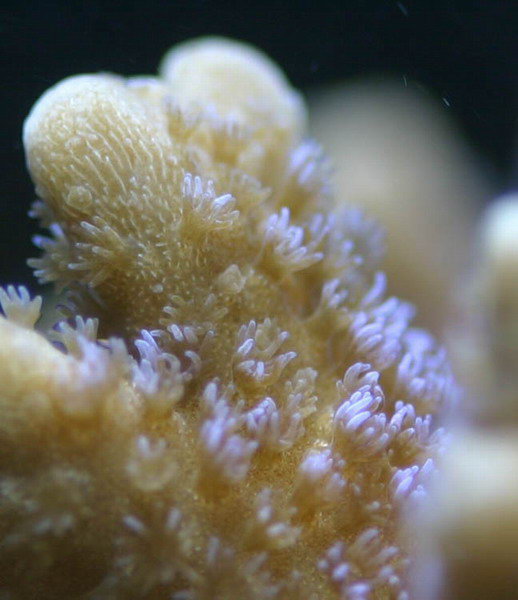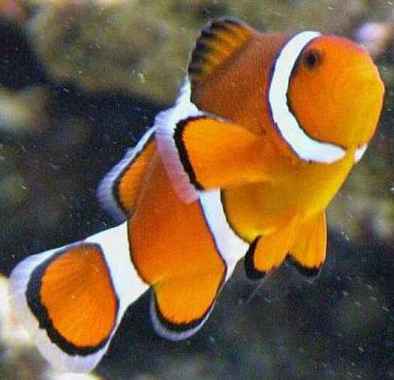| Author |
 Topic Search Topic Search  Topic Options Topic Options
|
DaZoo 
Guest


Joined: October 01 2004
Location: Tooele
Status: Offline
Points: 72
|
 Post Options Post Options
 Thanks(0) Thanks(0)
 Quote Quote  Reply Reply
 Topic: Live Rock vs. Lava Rock Topic: Live Rock vs. Lava Rock
Posted: October 22 2004 at 10:39am |
Can anyone give me information about using Lava Rock vs. Live Rock? A friend of my son's has had a tank for over 9 years of which he has used cheep Lava Rock to decorate his tank. His tank is full of the usual Reef inhabitants and looks quite nice. I have just started to put live rock in my tank (210) and I still have at least 195lbs to go. So the prospect of using cheep Lava Rock is apealing. But I would like to get the opinion of as many as you that I can before I start with the Lava Rock.
|
 |
Crazy Tarzan 
Guest


Joined: September 12 2003
Location: Riverton, WY
Status: Offline
Points: 1681
|
 Post Options Post Options
 Thanks(0) Thanks(0)
 Quote Quote  Reply Reply
 Posted: October 22 2004 at 11:08am Posted: October 22 2004 at 11:08am |
|
Rumor has it that lava rock can leach different things into your
tank. So... many people would recomend using some lbtr
(lake bonnevile tufa rock) or purchasing rock from someone on the board
when they are selling. Also remember to leave some room to place
in corals which are almost always attached to some sort of rock.
|
|
Was that in there yesterday? Casper--WY windier than ?
Down to a 20, soon to double or nothing
|
 |
Mark Peterson 
Paid Member


Joined: June 19 2002
Location: Murray
Status: Offline
Points: 21436
|
 Post Options Post Options
 Thanks(0) Thanks(0)
 Quote Quote  Reply Reply
 Posted: October 22 2004 at 11:22am Posted: October 22 2004 at 11:22am |
That's right, it is not CACO3 (arogonite) so it is not the best for a reef aquarium. Lava rock does not cover with Coralline algae the same way. It may look good to you now, but wait till you become more experienced and discriminating and you'll see the difference.
I'm heading out to collect rock right now with seti007. Do you want more. Call me at the number below which reaches me out in the desert.
I first placed a few pieces of LBTR in my tank 5 years ago. One piece recently made it's way back to me and it was 100% covered with coralline, sponge and coral. I only recognized it when I turned it one way and noticed a unique shape on one side.

|
Reefkeeping Tips, & quick, easy setup tricks:www.utahreefs.com/forum/forum_posts.asp?TID=9244 Pay it forward - become a paid WMAS member 
|
 |
sushi 
Guest


Joined: August 26 2004
Location: United States
Status: Offline
Points: 91
|
 Post Options Post Options
 Thanks(0) Thanks(0)
 Quote Quote  Reply Reply
 Posted: October 22 2004 at 11:46am Posted: October 22 2004 at 11:46am |
|
As expensive as it is, and as easy as it is to get
aragonite. I would still only put live rock in my tank. I
really didnt have that option due to price. But looking back I
wish i would have pieced it one at a time. The difference between
true live rock, like fiji premium stuff, and aragonite, is
huge. Mabye not after a year or so. But its not just the
live rock, its all that comes with it, and yeah. Personally, and
from every tank i ever do he rest of my life, it will have Live
rock, and only live rock.
|
|
They all talk fast, but they all think slow.
|
 |
Kull 
Guest


Joined: October 24 2003
Location: Zimbabwe
Status: Offline
Points: 594
|
 Post Options Post Options
 Thanks(0) Thanks(0)
 Quote Quote  Reply Reply
 Posted: October 22 2004 at 1:43pm Posted: October 22 2004 at 1:43pm |
I've heard the rumar about lava rock as well. Has anyone heard the same thing about lace rock? (The stuff that they sell at most fresh water stores?) I doubt that lace rock is aragonite.
In talking to differant people I have all sorts of things even about LBTR.
One of the more interesting arguments was this: Which sorce is more renuable LBTR or figi, or tonga take your pick live rock? The person claimed that the ocean was more renewable then LBTR, will I think that he may be right, corals will always be growing and dieing, and just like anything else if it is managed correctly then we will have a renewable source.
|
|
"So this is what gives meaning to your life." -Unknown
Daniel in Santaquin
|
 |
jfinch 
Guest


Joined: March 06 2003
Location: Pleasant Grove
Status: Offline
Points: 7067
|
 Post Options Post Options
 Thanks(0) Thanks(0)
 Quote Quote  Reply Reply
 Posted: October 22 2004 at 2:50pm Posted: October 22 2004 at 2:50pm |
I've heard the rumar about lava rock as well. Has anyone heard the same thing about lace rock? (The stuff that they sell at most fresh water stores?) I doubt that lace rock is aragonite.
Lace rock is lava rock. Unless you are talking about the white lace rock that comes out of central Texas. I have some of that and it's limestone. But the lace rock sold in the LFS is volcanic. There's mountains of the stuff out in the west desert. The local stuff is ryolite but "lace rock" might also be basalt. Ryolite and basalt are very similar and differ in the amount of silica.
|
|
|
 |
faviasteve 
Guest


Joined: June 30 2004
Location: Seychelles
Status: Offline
Points: 455
|
 Post Options Post Options
 Thanks(0) Thanks(0)
 Quote Quote  Reply Reply
 Posted: October 22 2004 at 8:22pm Posted: October 22 2004 at 8:22pm |
Porous black or red "lava" rock (called scoria) will leach ions into the water much more than light colored volcanic rock such as rhyolite. Porous rhyolite is pumice. Nonporous scoria is basalt.
The three dominant minerals in scoria are olivine, pyroxene and plagioclase feldspar. Olivine and pyroxene are iron-magnesium silicates and plagioclase feldspar is a calcium-sodium silicate. As a general rule, dark colored volcanic minerals (which make up dark volcanic rocks) weather much more quickly and thus release more ions than light colored volcanic minerals.
The three dominant minerals in rhyolite/pumice are plagioclase feldspar, potassium feldspar and quartz. Potassium feldspar is a potassium-sodium silicate and quartz is pure silicate. Rhyolite/pumice is very resistant to chemical weathering.
Scoria will leach iron, magnesium, calcium and sodium into the water. There are also small amounts of nickel and chromium in olivine, which would also be released.
In conclusion, I wouldn't use any dark colored volcanic rock in a saltwater aquarium. A white/cream colored volcanic rock probably won't release anything harmful into the water. Live rock or Utah rock composed of aragonite is much better in my opinion. Volcanic rock is often sharp and can cut fish if they run into it.
Steve
B.S. Geology
I like to show off my geology knowledge once in a while.  Good luck with your tank. Good luck with your tank.
Edited by faviasteve
|
|
Steve Burton
Logan, Utah
|
 |
jfinch 
Guest


Joined: March 06 2003
Location: Pleasant Grove
Status: Offline
Points: 7067
|
 Post Options Post Options
 Thanks(0) Thanks(0)
 Quote Quote  Reply Reply
 Posted: October 22 2004 at 10:10pm Posted: October 22 2004 at 10:10pm |
 Awesome! Awesome!
Geology is great!
|
|
|
 |
Mark Peterson 
Paid Member


Joined: June 19 2002
Location: Murray
Status: Offline
Points: 21436
|
 Post Options Post Options
 Thanks(0) Thanks(0)
 Quote Quote  Reply Reply
 Posted: October 22 2004 at 10:46pm Posted: October 22 2004 at 10:46pm |
Now I have some good news, there is a new spot for really cool LBTR different than what we have found to this point.
and oh btw, Sushi, I also would use all LR from the wild in my tanks except for two things. I'm a cheap SOB and a big DIYer. 
DaZoo and his wife caught up with Seti007 and I on this collection trip. The DaZoo's explored a little further away from the usual place, in their vehicle, and found some rock that has so much of the size and shape of Lace/Lava Rock it's scary. (an appropriate term this close to Halloween  ) I can only assume that it is LBTR and not Lace rock.
Unfortunately, by the time they drove back to where we were exploring it was late and we were all in a hurry to leave. There wasn't time for Seti007 and I to go up to where they found the new rock. Needless to say, I'll be back out there soon to check it out. If you want to come along or want me to pick some up for you, you'd better call me quick. 
|
Reefkeeping Tips, & quick, easy setup tricks:www.utahreefs.com/forum/forum_posts.asp?TID=9244 Pay it forward - become a paid WMAS member 
|
 |
Skyetone 
Guest


Joined: January 09 2004
Location: United States
Status: Offline
Points: 1612
|
 Post Options Post Options
 Thanks(0) Thanks(0)
 Quote Quote  Reply Reply
 Posted: October 23 2004 at 8:18am Posted: October 23 2004 at 8:18am |
|
hey mark, what was that piece from last night? I have issues with LBTR cuz it usually is dence. Not very microbe freindly. But the piece you had was VERY porus.....
|
|
I will just give my warning that your system will flood, bulbs will burn out, and things will take continuous maintenance... get over it.
Magna
|
 |
Mark Peterson 
Paid Member


Joined: June 19 2002
Location: Murray
Status: Offline
Points: 21436
|
 Post Options Post Options
 Thanks(0) Thanks(0)
 Quote Quote  Reply Reply
 Posted: October 23 2004 at 9:02am Posted: October 23 2004 at 9:02am |
|
Microbe friendly? "Microbes" are microscopic and live in almost all rock.
Dense or porous, it doesn't matter does it? When a rock is covered with coralline algae and coral, do you really care?
|
Reefkeeping Tips, & quick, easy setup tricks:www.utahreefs.com/forum/forum_posts.asp?TID=9244 Pay it forward - become a paid WMAS member 
|
 |
Mark Peterson 
Paid Member


Joined: June 19 2002
Location: Murray
Status: Offline
Points: 21436
|
 Post Options Post Options
 Thanks(0) Thanks(0)
 Quote Quote  Reply Reply
 Posted: October 23 2004 at 9:07am Posted: October 23 2004 at 9:07am |
|
FaviaSteve, I have some LBTR that needs to be looked at and tested for Cu. Are you interested? From a geologist's and hobbyist's perspective, have you done much looking at the use of terrestrial rock for reef aquariums?
|
Reefkeeping Tips, & quick, easy setup tricks:www.utahreefs.com/forum/forum_posts.asp?TID=9244 Pay it forward - become a paid WMAS member 
|
 |
improdigal 
Guest


Joined: May 02 2004
Location: Sugarhouse, UT
Status: Offline
Points: 1151
|
 Post Options Post Options
 Thanks(0) Thanks(0)
 Quote Quote  Reply Reply
 Posted: October 23 2004 at 12:41pm Posted: October 23 2004 at 12:41pm |
 Mark Peterson wrote: Mark Peterson wrote:
If you want to come along or want me to pick some up for you, you'd better call me quick.  |
Calling.... :-)
|
|
Patrick
|
 |
Will Spencer 
Admin Group


Joined: September 04 2003
Location: West Jordan
Status: Offline
Points: 6799
|
 Post Options Post Options
 Thanks(0) Thanks(0)
 Quote Quote  Reply Reply
 Posted: October 23 2004 at 1:26pm Posted: October 23 2004 at 1:26pm |
When I bought tank I have at my office it came with a bunch of Lace Rock. This had been in the tank as a fish only tank for some 10-12 years. Not knowing any better I put it back in the tank when I set it up. It has been in there for over a year now and has coraline growing all over it. Just within the last month or so Encrusting Gorgonia is also growing on it. I haven't had any real problems with that tank because of this rock so I assume it's not leaching anything harmful. This is the white, volcanic, lace rock that can be found out in the deserts around here.
|
 |
faviasteve 
Guest


Joined: June 30 2004
Location: Seychelles
Status: Offline
Points: 455
|
 Post Options Post Options
 Thanks(0) Thanks(0)
 Quote Quote  Reply Reply
 Posted: October 24 2004 at 12:43am Posted: October 24 2004 at 12:43am |
Mark,
I used scoria in my first saltwater fish-only tank. I had a lionfish, a green wolf eel and a grouper in a 90 gallon and nothing else. The only drawback I noticed with it then was it would cut my hand if I picked it up too forcefully or it would scrape or cut a fish that accidenly bumped it. Even though scoria weathers quickly compared to other rocks, it's still a very, very slow process. A good sized piece should take millions of years to completely dissolve chemically.
Even though only tiny amounts of material are leached into the tank, I still not sure it's safe. Dr. Ron Shimek's research on the extreme toxicity of copper (even in concentrations much less than 1 ppm) to marine invertebrates is frightening. I believe chromium and other "heavy metals" may also be extremely toxic.
A few years ago I set up my first real reef tank, complete with corals and lots of snails. The tank thrived for about 6 months and then a problem started to apprear. Some of my turbo snails, which had all been healthy since the tank was set up, began to become weak and fall over for no apparent reason. This contiued to become worse until some starting dying. At the same time, the coral polyps opened less and less each day. After about a month, all the snails died and the coral polps remained closed. The fish in the tank seemed completely unaffected. My clownfish pair laid eggs throught the whole ordeal without pause. All my water parameters tested perfectly and my copper testkit always tested 0. I moved soon after the mysterious snail deaths and dismantled the tank. To my surprise, the "stainless steel" hose clamp which I'd used to secure the tubing onto my mag-drive return pump was almost completely rusted away. Stainless steel is stainless because of the addition of chromium and other metals. I believe that the chromium released by the rusting hose clamp poisoned my tank.
I doubt dark volcanic rock would release as many toxic metal ions as my rusting hose clamp, but over many years scoria may release enough to affect sensitive inverts like snails.
I can stop by and look at your rock in a week or two when I journey south. I'm not sure about my schedule yet. The best way to test for trace amounts of copper in rock would be with an X-ray fluorescence machine or an electron microscope or microprobe. I don't have access to them anymore. If you pulverize a suspicous area of the rock and then completely dissolve it with an acid, it should liberate the copper ions into solution so they can be detected by an aquarium test kit.
Steve
|
|
Steve Burton
Logan, Utah
|
 |